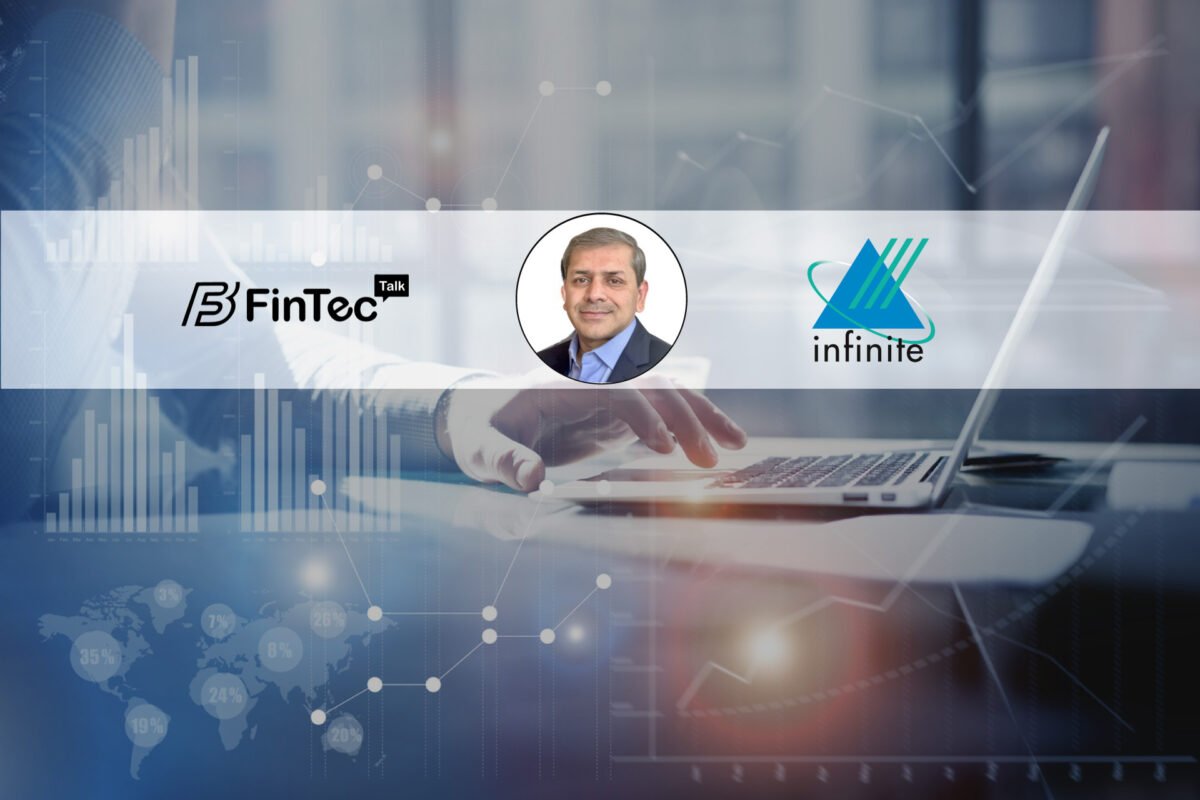When AI runs fraud at scale, identity can’t just be verified—it must be continuously trusted. This isn’t about defense. It’s about redefining control.
Arun, with your extensive experience in identity security, how have you seen the landscape of fraud prevention evolve over the past decade, and what pivotal moments have shaped today’s approach?
Fraud prevention is evolving rapidly, and the biggest shift I’ve seen is the move from traditional perimeter-based security to an identity-first approach. A decade ago, organizations relied on static rules, passwords, and network firewalls to keep attackers out. But today, cybercriminals aren’t breaking in—they’re logging in. We’re seeing more sophisticated attacks using deepfakes, synthetic identities, SIM swapping, and AI-driven phishing, which make it easier for attackers to bypass traditional security measures.
The key realization in the industry is that identity is now the primary attack surface. That’s why security teams are focusing on continuous authentication, risk-based access, and AI-powered fraud detection. It’s no longer about just checking credentials at login—it’s about verifying trust at every step of the user journey.
Regulations like GDPR, CCPA, PSD2, and NIST are also pushing organizations – especially in financial services – to strengthen identity verification and security. At the same time, AI and machine learning are making fraud prevention more dynamic, allowing security teams to adapt to new threats in real time instead of relying on static defenses.
We’re also seeing industry leaders like CyberArk, SailPoint, and Okta driving this transformation. CyberArk’s recent acquisition of Zilla Security is a great example of how identity compliance and governance are becoming a bigger priority, particularly in cloud environments.
At the end of the day, identity security isn’t just an IT issue – it’s a business imperative. Organizations need to continuously validate trust to stay ahead of evolving threats, and the companies that recognize this shift are the ones that will be best positioned to protect their customers and data moving forward.
Many financial institutions are balancing security with user convenience. How can organizations implement robust fraud prevention measures without introducing excessive friction for legitimate customers?
Security and user experience don’t have to be at odds – when implemented correctly, they enhance each other. The key lies in AI-driven, adaptive security that continuously assesses risk in real time. Instead of applying a one-size-fits-all approach, organizations should leverage Risk-Adaptive Authentication, allowing low-risk users to access services seamlessly while subjecting suspicious activity to step-up verification.
Behavioral biometrics – analyzing keystroke dynamics, mouse movements, and mobile gestures – enables passive authentication, reducing friction without compromising security. Moving beyond passwords to biometrics, passkeys, and cryptographic authentication further strengthens security while eliminating common user pain points.
By integrating AI-powered fraud prevention with intelligent identity verification, organizations can minimize fraud without frustrating legitimate users—ensuring security feels effortless, not obstructive.
AI-driven fraud detection is becoming increasingly sophisticated. Could you share how BeyondID is leveraging AI to proactively identify and mitigate fraudulent activities?
Attackers exploit MFA fatigue, SIM swapping, and sophisticated phishing schemes, making it clear that MFA alone is no longer sufficient.
At BeyondID, we don’t just detect fraud, we predict and prevent it. Our AI-powered Identity Security Posture Management (ISPM) and Identity Threat Detection and Response (ITDR) solutions scan for threats in real time, flagging credential misuse and account takeovers before they escalate.
Our machine learning models identify red flags like unusual transaction patterns, location mismatches, and device anomalies, shutting down fraud before it takes hold. With adaptive access, our AI adjusts security measures dynamically, ensuring frictionless protection for legitimate users while stopping fraudsters in their tracks.
Financial institutions using our AI-driven approach have reduced fraud losses by as much as 80%, proving that the future of fraud prevention isn’t just reactive—it’s proactive.
Multi-factor authentication (MFA) has been a standard security measure, yet fraudsters continue to find ways around it. What advancements or alternative approaches do you believe will enhance authentication security in the coming years?
Multi-factor authentication (MFA) has been a standard security measure, yet fraudsters continue to find ways around it. Attackers exploit MFA fatigue, SIM swapping, and sophisticated phishing schemes, making it clear that MFA alone is no longer sufficient. The future of authentication lies in phishing-resistant security that eliminates common attack vectors.
FIDO2 Passkeys and public key cryptography (PKI) will replace passwords and one-time codes, significantly reducing the risk of credential theft. AI-powered continuous authentication will enhance security by analyzing behavioral and biometric patterns in real time, verifying users not just at login but throughout their session. This approach ensures that stolen credentials become useless.
Organizations can fully remove passwords by adopting biometrics, secure device binding, and cryptographic authentication. We are working with numerous financial services institutions to lead the way in AI-enhanced authentication solutions that combine these technologies for maximum security without compromising the user experience.
End-to-end encryption plays a crucial role in securing sensitive data. From your perspective, what are the biggest misconceptions about encryption in financial institutions, and how can they maximize its effectiveness?
Encryption myths abound. Some believe it’s only needed for data at rest, but sensitive information should be encrypted in transit and during processing as well. Others assume all encryption is equally strong, but weak algorithms won’t withstand evolving threats. Some worry encryption slows down performance, yet modern hardware-accelerated encryption eliminates latency concerns.
The most effective approach is End-to-End Encryption (E2EE), ensuring data remains protected from exposure, even within internal systems. Homomorphic encryption allows computations on encrypted data without decryption, reducing risk. And as quantum computing advances, financial institutions must prepare for Post-Quantum Cryptography (PQC) to stay ahead of emerging threats.
Cybercriminals are always evolving their tactics. What are some of the most pressing identity fraud threats that financial institutions should prepare for in 2025 and beyond?
Identity fraud is advancing at an unprecedented pace, and financial institutions need to stay ahead. AI-generated synthetic identities are being used to secure fraudulent loans and take over legitimate accounts. Deepfake-enhanced phishing attacks are another major concern—cybercriminals are using AI to manipulate voices, videos, and chatbots to trick users into handing over credentials.
We’re also seeing attackers exploit MFA push fatigue, bombarding users with authentication requests until they approve a fraudulent login. And with AI-driven credential stuffing, cybercriminals can test stolen logins at scale, bypassing traditional security measures.
The good news is that financial institutions can fight back with AI-powered risk assessments, continuous authentication, and advanced identity analytics. Fraudsters are getting more sophisticated, but so is our ability to detect and stop them before damage is done.
Financial organizations often struggle with legacy systems that may not be built for today’s security challenges. How can institutions modernize their identity security strategies without causing major disruptions to existing operations?
Modernizing identity security doesn’t have to mean tearing everything down and starting from scratch. The key is a phased approach that balances security enhancements with operational continuity. Moving identity security to the cloud simplifies management, reduces costs, and streamlines compliance. Adopting a Zero Trust model and an identity-first architecture strengthens defenses while minimizing disruption. Automating security and digital identity policies ensures seamless integration between legacy and modern systems. By implementing these incremental transformations, financial institutions can enhance security without disrupting day-to-day operations. MISPs like BeyondID specialize in secure digital identity transformation, helping institutions navigate this journey effectively.
Regulations around data privacy and identity security are becoming stricter worldwide. How do you see regulatory changes shaping the future of fraud prevention, and what should financial institutions do to stay ahead of compliance requirements?
Regulations are fundamentally reshaping identity security, creating both challenges and opportunities for financial institutions. The EU Digital Identity Wallets (EUDI) mandate is setting a higher standard for digital identity verification, while the EU AI Act is tightening oversight on AI-driven fraud detection. Meanwhile, in the U.S., Cybersecurity Executive Orders are mandating phishing-resistant authentication, pushing organizations to rethink their security strategies.
To stay ahead in this rapidly evolving landscape, financial institutions must embrace AI-driven compliance monitoring, automated fraud detection, and seamless cross-border authentication. Compliance is no longer just a box to check—it’s a strategic advantage. The key to success is agility: leveraging AI to adapt in real time, detect emerging fraud patterns, and ensure regulatory alignment across jurisdictions. As regulations continue to evolve, AI will be the driving force behind a future where security and compliance go hand in hand.
Beyond technology, how important is internal security awareness and employee training in preventing fraud, and what best practices would you recommend for fostering a culture of cybersecurity resilience?
Security awareness and employee training are just as critical as technology in preventing fraud. No matter how advanced security systems become, human error remains a key vulnerability—cybercriminals exploit this through tactics like social engineering, phishing, and credential theft. Organizations that embed cybersecurity into their culture empower employees to be the first line of defense rather than the weakest link.
The most effective approach goes beyond check-the-box training. Regular, interactive security education—tailored to different roles—helps employees recognize real-world threats. AI-driven phishing simulations, gamified learning, and hands-on security drills make training more engaging and memorable. A zero-trust mindset, combined with least-privilege access, risk-adaptive authentication, and passwordless security, minimizes opportunities for fraudsters to gain access.
Encouraging open incident reporting, recognizing security-conscious behavior, and leveraging AI to detect anomalies in real time further strengthen defenses. Ultimately, the combination of continuous education and AI-powered fraud prevention not only reduces risk but also ensures compliance and maintains a seamless user experience.
Looking ahead, how do you envision the future of identity security in financial services? What key innovations or trends do you anticipate will define the next phase of fraud prevention?
Fraud prevention today isn’t just about protecting human identities—it’s about securing the exponentially growing number of non-human identities, including AI agents and connected devices that now drive business operations. These agents act on our behalf, handling transactions, processing sensitive data, and making critical decisions. If hijacked, they become powerful tools for fraud and data theft.
To stay ahead, organizations need AI-powered autonomous security that predicts and blocks fraud before it happens. AI-driven identity protection ensures both human and non-human actors operate securely, reducing risks in real time. Meanwhile, self-sovereign identity (SSI) is shifting control back to users, minimizing reliance on centralized databases that are prime targets for cybercriminals. And with quantum computing on the horizon, quantum-safe identity verification will be essential to protect financial and business operations from future threats.
The scope of identity security has never been broader, and the risks have never been greater. AI agents and non-human identities aren’t going away—securing them must be a priority now, not later. Organizations that take a proactive, AI-driven approach to fraud prevention will not only protect themselves but also shape the future of digital security.
Stay Ahead of the Financial Curve with Our Latest Fintech News Updates!




